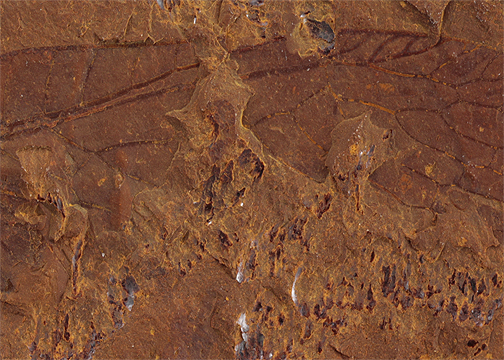Abstract
Mantispidae is a cosmopolitan family of neuropteran insects, with approximately 395 extant species (Ohl et al., 2004; Jepson, 2015; Engel et al., 2018; Li et al., 2023). The family includes some of the most distinctive of lacewings owing to their convergent traits with mantises (Mantodea), complete with elongate prothoraces, prominent and large compound eyes on a moveable head, and powerful raptorial forelegs. Indeed, species of the family are referred to as mantis lacewings or mantid lacewings owing to the considerable similarity. As one would suspect, adults are predatory on a variety of small-bodied arthropods, typically hunting during dusk or night (Snyman et al., 2020). Larvae are also predators, although some are specialised for particular prey (e.g., subfamily Symphrasinae), while those of the nominate subfamily Mantispinae are ectoparasitic on spider egg cases (Redborg, 1998). Extant Mantispidae are found on every continent except Antarctica but show their highest diversity and geographical distribution in Australia and the Americas (Fig. 1A).
References
- Banks, N. (1913) Synopses and descriptions of exotic Neuroptera. Transactions of the American Entomological Society, 39, 201–242.
- Cantrill, D.J., Ohlsen, D., McCurry, M.R. & Frese, M. (2023) Gleichenia nagalingumiae sp. nov., a remarkably well-preserved fossil species with in situ spores from the Miocene of Australia. Review of Palaeobotany and Palynology, 310, 104823. https://doi.org/10.1016/j.revpalbo.2022.104823
- Djokic, T., Frese, M., Woods, A., Dettmann, M., Flemons, P., Brink, F. & McCurry, M.R. (2023) Inferring the age and environmental characteristics of fossil sites using citizen science. PLoS One, 18, e0284388. https://doi.org/10.1371/journal.pone.0284388
- Engel, M.S., Winterton, S.L. & Breitkreuz, L.C.V. (2018) Phylogeny and evolution of Neuropterida: where have wings of lace taken us? Annual Review of Entomology, 61, 531–551. https://doi.org/10.1146/annurev-ento-020117-043127
- Frese, M., McCurry, M.R. & Wells, A. (2024) Miocene caddisflies from Australia: iron-rich sediments preserve internal organs, tracheoles and corneal nanocoating of larvae and pupae. Zoological Journal of the Linnean Society, zlae003. https://doi.org/10.1093/zoolinnean/zlae003
- Jepson, J.E. (2015) A review of the current state of knowledge of fossil Mantispidae (Insecta: Neuroptera). Zootaxa, 3964 (4), 419–432. https://doi.org/10.11646/zootaxa.3964.4.2
- Lambkin, K. (1986) A revision of the Australian Mantispidae (Insecta: Neuroptera) with a contribution to the classification of the family. II. Calomantispinae and Mantispinae. Australian Journal of Zoology Supplementary Series, 34, 1–113. https://doi.org/10.1071/ajzs117
- Leach, W.E. (1815) Entomology. In: Brewster, D. (Ed.), Edinburgh Encyclopaedia. Vol. 9. William Blackwood, Edinburgh, pp. 57–172.
- Li, H.Y., Zhuo, D., Wang, B., Nakamine, H., Yamamoto, S., Zhang, W.W., Ling, J.N., Ohl, M., Aspöck, U. & Aspöck, H. (2023) New genera and species of Mantispoidea (Insecta, Neuroptera) from the mid-Cretaceous Kachin amber, Myanmar. Palaeoentomology, 6 (6), 549–611. https://doi.org/10.11646/palaeoentomology.6.6.1
- Linnaeus, C. (1758) Systema Naturae per Regna Tria Naturae, Secundum Classes, Ordines, Genera, Species, cum Characteribus, Differentiis, Synonymis, Locis. Editio Decima. 824 pp. https://doi.org/10.5962/bhl.title.542
- Lu, X., Wang, B., Zhang, W., Ohl, M., Engel, M.S. & Liu, X. (2020) Cretaceous diversity and disparity in a lacewing lineage of predators (Neuroptera: Mantispidae). Proceedings of the Royal Society B: Biological Sciences, 287, 20200629. https://doi.org/10.1098/rspb.2020.0629
- McCurry, M.R., Cantrill, D.J., Smith, P.M., Beattie, R., Dettmann, M., Baranov, V., Magee, C., Nguyen, J.M., Forster, M.A., Hinde, J., Pogson, R., Wang, H., Marjo, C.E., Vasconcelos, P. & Frese, M. (2022) A Lagerstätte from Australia provides insight into the nature of Miocene mesic ecosystems. Science Advances, 8, eabm1406. https://doi.org/10.1126/sciadv.abm1406
- McCurry, M.R., Frese, M. & Raven, R. (2024). A large brush-footed mygalomorph spider from the Miocene of Australia. Zoological Journal of the Linnean Society, 200 (4), 1026–1033. https://doi.org/10.1093/zoolinnean/zlad100
- Moulds, M., Frese, M. & McCurry, M.R. (2022) New cicada fossils from Australia (Hemiptera: Cicadoidea: Cicadidae) with remarkably detailed wing surface nanostructure. Alcheringa: An Australasian Journal of Palaeontology, 46, 264–276. https://doi.org/10.1080/03115518.2022.2112287
- Navás, L. (1914) Mantíspidos nuevos (Segunda [II] serie). Memorias de la Real Academia de Ciencias y Artes de Barcelona, 3, 83–103.
- Ohl, M., Barkalov, A.V. & Cheng, X.Y. (2004) Annotated catalog of the Mantispidae of the world (Neuroptera). Contributions on Entomology, International, 5 (3), 129–262.
- Redborg, K.E. (1998) Biology of the Mantispidae. Annual Review of Entomology, 43, 175–194. https://doi.org/10.1146/annurev.ento.43.1.175
- Richardson, B., McCurry, M.R. & Frese, M. (2024) Description and evolutionary biography of the first Miocene jumping spider (Aranaea: Salticidae) from a southern continent. Zoological Journal of the Linnean Society, 200 (4), 1013–1025. https://doi.org/10.1093/zoolinnean/zlad105
- Snyman, L.P., Ohl, M., Pirk, C.W.W. & Sole, C.L. (2020) A review of the biology and biogeography of Mantispidae (Neuroptera). Insect Systematics & Evolution, 52, 125–166. https://doi.org/10.1163/1876312X-bja10002


